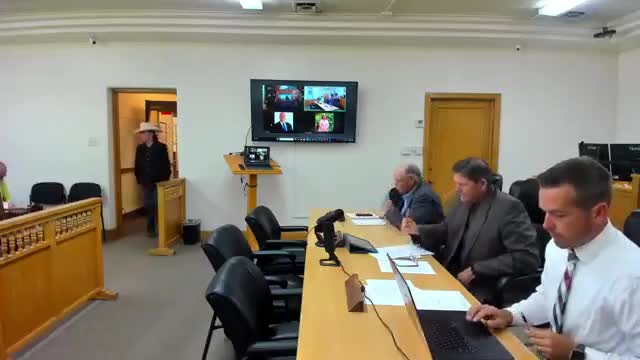Utah grants $1M for Birch Creek Number 2 Dam rehabilitation planning
July 04, 2025 | Rich County Commission, Rich County Boards and Commissions, Rich County, Utah
This article was created by AI summarizing key points discussed. AI makes mistakes, so for full details and context, please refer to the video of the full meeting. Please report any errors so we can fix them. Report an error »

The Rich County Commission meeting on July 4, 2025, highlighted significant developments regarding local infrastructure and conservation efforts that will directly impact the community.
One of the key discussions centered around the Birch Creek Number 2 Dam, which has been out of compliance for some time. Ben Merritt from the Utah Department of Natural Resources announced that the state has secured a grant from FEMA to fund a planning and design project aimed at rehabilitating the dam. This project is crucial as it addresses safety concerns associated with high hazard dams. The commission unanimously agreed to act as the fiscal agent for this project, which will involve a comprehensive study costing approximately $1 million. This study is expected to take about a year to complete, with the goal of identifying necessary repairs to bring the dam up to safety standards.
The funding for this project will primarily come from federal and state sources, covering 65% of the costs, while the local irrigation company will eventually be responsible for a small portion of the expenses once construction begins. The commission expressed optimism about the project, recognizing the importance of maintaining safe infrastructure for the community.
In addition to the dam project, the meeting also featured a presentation from Mike Dunfee of the U.S. Fish and Wildlife Service regarding a voluntary conservation easement. This initiative aims to protect sage grouse habitats and large game migration corridors in the Bear River Watershed. The commission was informed that the funding for this easement would come from the Land and Water Conservation Fund, which requires the county's non-objection to proceed. Dunfee noted an increase in interest from landowners in conservation easements, reflecting a growing trend as agricultural challenges persist.
These discussions underscore the commission's commitment to enhancing public safety through infrastructure improvements and promoting environmental conservation, both of which are vital for the well-being of Rich County residents. The outcomes of these projects will not only address immediate safety concerns but also contribute to the long-term sustainability of the region's natural resources.
One of the key discussions centered around the Birch Creek Number 2 Dam, which has been out of compliance for some time. Ben Merritt from the Utah Department of Natural Resources announced that the state has secured a grant from FEMA to fund a planning and design project aimed at rehabilitating the dam. This project is crucial as it addresses safety concerns associated with high hazard dams. The commission unanimously agreed to act as the fiscal agent for this project, which will involve a comprehensive study costing approximately $1 million. This study is expected to take about a year to complete, with the goal of identifying necessary repairs to bring the dam up to safety standards.
The funding for this project will primarily come from federal and state sources, covering 65% of the costs, while the local irrigation company will eventually be responsible for a small portion of the expenses once construction begins. The commission expressed optimism about the project, recognizing the importance of maintaining safe infrastructure for the community.
In addition to the dam project, the meeting also featured a presentation from Mike Dunfee of the U.S. Fish and Wildlife Service regarding a voluntary conservation easement. This initiative aims to protect sage grouse habitats and large game migration corridors in the Bear River Watershed. The commission was informed that the funding for this easement would come from the Land and Water Conservation Fund, which requires the county's non-objection to proceed. Dunfee noted an increase in interest from landowners in conservation easements, reflecting a growing trend as agricultural challenges persist.
These discussions underscore the commission's commitment to enhancing public safety through infrastructure improvements and promoting environmental conservation, both of which are vital for the well-being of Rich County residents. The outcomes of these projects will not only address immediate safety concerns but also contribute to the long-term sustainability of the region's natural resources.
View full meeting
This article is based on a recent meeting—watch the full video and explore the complete transcript for deeper insights into the discussion.
View full meeting

